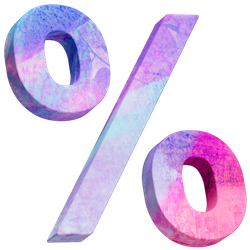VAT Rate in India

How much is VAT in India?
The higher VAT rate in India is a goods and services tax (GST) of 28%. It applies to consumer durables, air conditioning, automobiles, cement, chocolate and accommodation above 7,500 INR. The standard VAT rates are 18% and 12%. The reduced rate is 5%. India also has some zero-rated goods, the sale of which must still be reported on your VAT return, even though no VAT is charged.
The first standard VAT rate (18%) applies to telephone, banking, insurance, restaurants with alcohol license, tickets to cultural events and cinema, TVs, gaming consoles.
The second standard VAT rate (12%) applies to restaurants (non-air conditioned), construction, intellectual property, some foodstuff, mobile phones.
The reduced VAT rate (5%) applies to privately-provided transport, advertising, sugar, tea and coffee, medicine.
Indian zero-rated goods and services include basic foods, postal services, books and newspapers.

Wise is the cheaper, faster way to send money abroad.
If you need to make payments abroad to pay international invoices, suppliers or freelancers, you could be better off with Wise.
With Wise you get the real mid-market exchange rate every time, with no markups and no hidden fees. There’s just a low , transparent charge which can work out much cheaper than your regular bank, or alternatives like PayPal.
Payments are secure, fast, and arranged online for convenience. Try Wise today, to see how simple it is to access international payments for less.
Wise business accounts are not yet available for companies registered in India. However we hope to expand our service in future.
What is a VAT rate?
VAT (value added tax) is a type of consumption tax. The Indian government applies it on the sale of goods and services.
VAT isn’t paid by businesses — instead, it’s charged to consumers in the price of goods, and collected by businesses, making it an indirect tax. Businesses are then responsible for reporting it to the government.

How to work out VAT in India.
Total price including VAT
To work out the total price at the higher rate of VAT (28%), multiply the original price by 1.28. For the first standard VAT rate (18%), multiply the original price by 1.18. For the second standard VAT rate (12%), multiply the original price by 1.12. For the reduced rate (5%), multiply the original price by 1.05.
Total price excluding VAT
You can calculate the total price excluding the higher VAT rate (28%) by dividing the original price by 1.28. For the first standard VAT rate (18%), divide the original price by 1.18. For the second standard VAT rate (12%), divide the original price by 1.12. For the reduced rate (5%), divide the original price by 1.05.
Calculate how much GST you need to pay with our handy GST calculator.

How does VAT work?
VAT is collected at each point in the production of goods — every time value is added and a sale is made. This is what gives VAT its name — value-added tax. It’s designed to be paid by the consumer at the end. Here’s an example:
- A supplier sells a badminton racket to a shop for $120. They owe $20 VAT to the government.
- The shop pays $120 but can claim the $20 back from the government, so the shop doesn’t pay the VAT.
- The shop sells the racket to the customer for $220. The VAT is $44 which the customer, as the end-user, pays in full to the shop.
- Together with the reclaimable $20 VAT, the shop will end up paying $24 to the government.

VAT Refund.
When you’ve visited India, you’ll be able to get a VAT refund on items bought if:
- You live outside India and are going back home.
There are multiple ways of receiving the refund — either get paid immediately at a refund booth at the airport or send the approved form to a refund company.

How to get a VAT refund in 3 simple steps?

Application form
Get a Tax Refund Application Form from the retailer. You might also be asked to show your passport to check that you’re eligible.

Customs check
At customs, present your passport, VAT form(s), VAT invoice(s) and the tax-free goods.

Refund approved
If all the criteria is met, customs will approve your form. You’ll get a signed form that allows you to receive the refund.